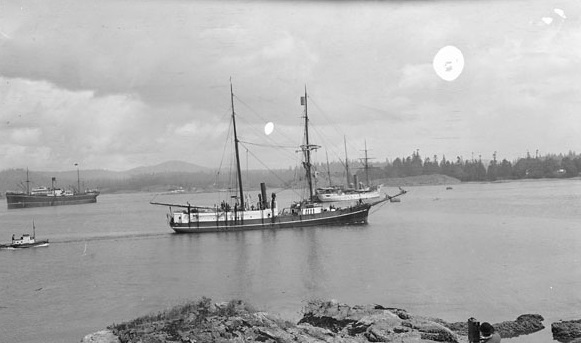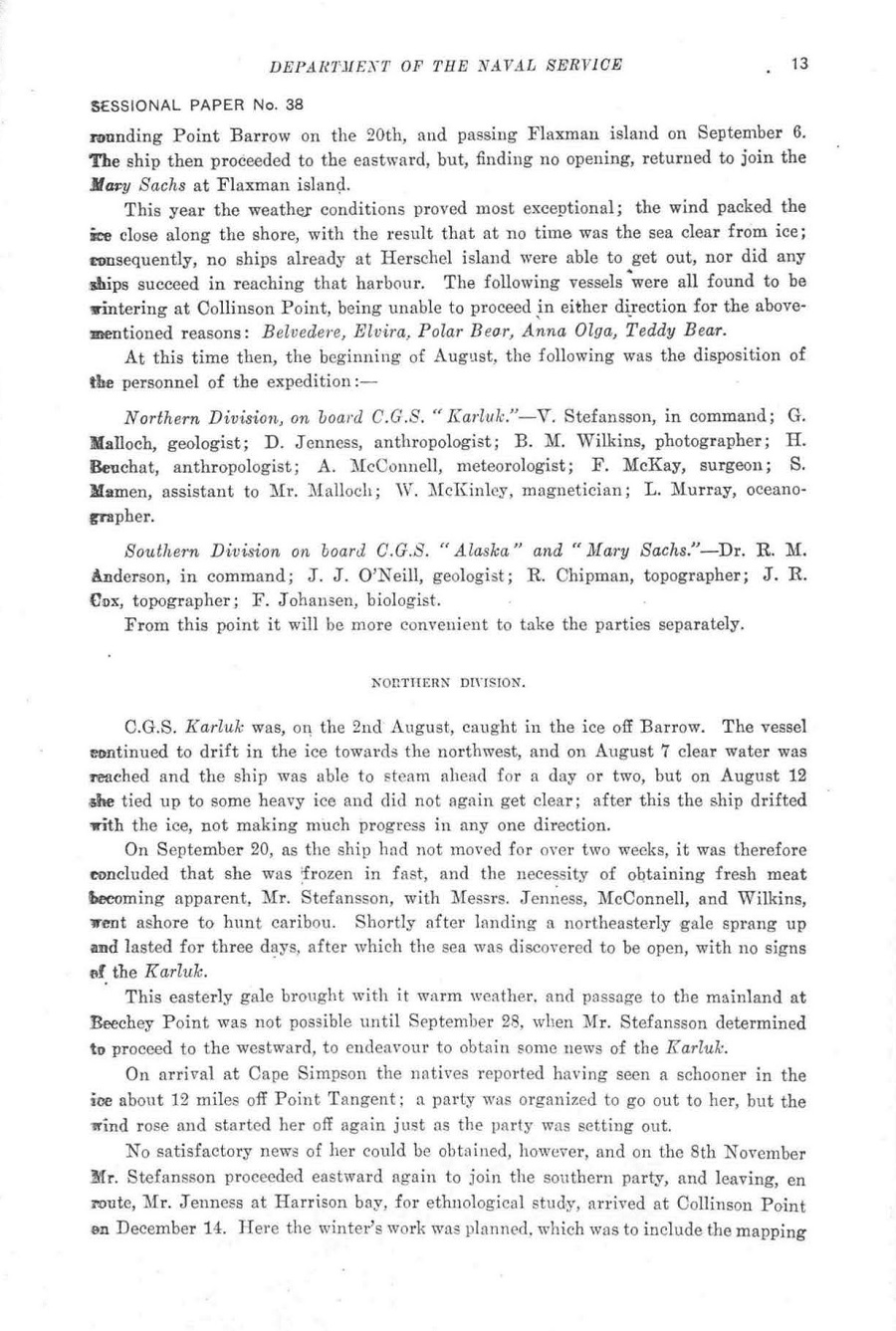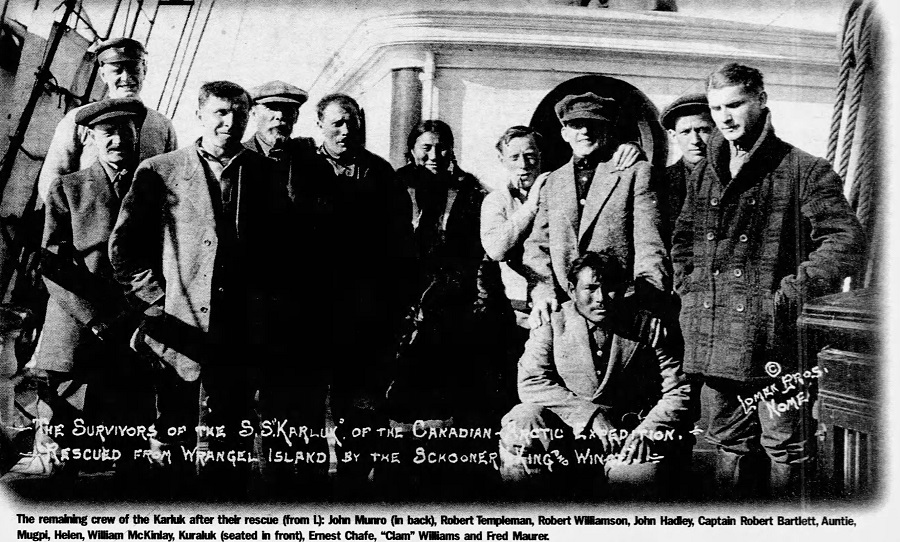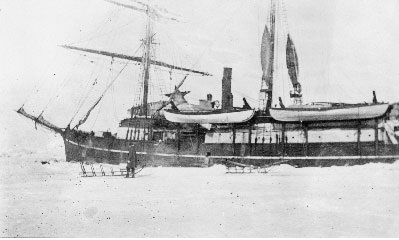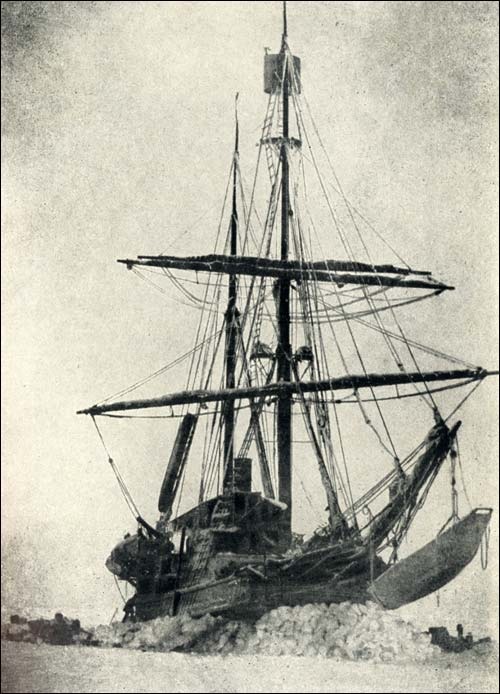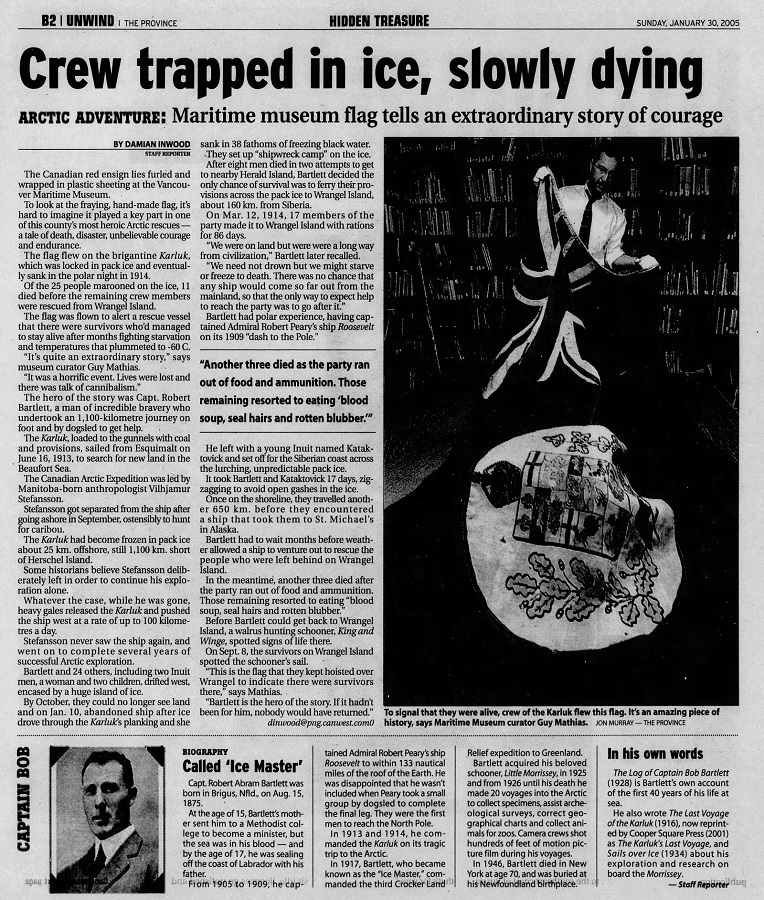|
KARLUK
Auxiliary
Note: KARLUK served in or was charter by the RCN in 1913-1914. There is some confusion as to whether or not she was commissioned as a letter from the CO at the time refer to her as CGS KARLUK while photos at the Library and Archives of Canada record her as HMCS KARLUK.
The Canadian Arctic Expedition: 1913 – 1916 (source: Forces Journal Vol 13 No 2 Pg 37 - www.forcesjournal.ca)
By the turn of the century, stimulated to some extent by American enquiries into the sovereignty of parts of the Arctic Archipelago, the Dominion began extending its interest in Canada’s maritime frontier to the north as well. This concern was the impetus for the legendary expeditions by Captain J. E. Bernier in his wooden ship CGS Arctic under the sponsorship of the Department of Marine and Fisheries. Conducted from 1904 and into the 1920s, with the primary objective of formally cementing Canada’s claims of sovereignty in the eastern high arctic, these expeditions were crowned by Bernier’s claim, made on Dominion Day 1909, of the entire Arctic Archipelago for Canada, which he commemorated with a tablet placed on Melville Island. Unfortunately, this was about as far west as he was able to force his little ship.
Since, as noted earlier, exploration of much of the north-western portion of that archipelago had been accomplished by the Norwegians, Canada’s claim to that area was potentially open to question. Consequently, when, in 1913, the Canadian explorer and ethnologist Vilhjalmur Stefansson proposed to the Canadian Government that he lead an expedition to explore the western high arctic, the government enthusiastically responded with support and funds. While a number of departments backed the mission, the Department of the Naval Service was selected to lead it, and the Department placed Stefansson in charge.
The object of the expedition, which was divided into northern and southern components, was to determine if a new continent existed north of Alaska, and to conduct scientific observations on wildlife and current drift. The Department purchased the 247 tonne auxiliary brigantine Karluk, which Stefansson had previously obtained for $10,000, assigning the veteran Captain R.A. Bartlett to command her. Two smaller vessels, Mary Sachs and Alaska, were also obtained to support the southern portion of the expedition in its exploration of the western arctic mainland. Unfortunately, Karluk, a former US fishing supply ship, although reinforced for operation in the ice periphery, was poorly suited to the task of deep penetration into arctic ice. Indeed, her 150 horsepower “coffee pot of an engine” was, in the opinion of her engineer, quite inadequate for ice navigation.
Consequently, it was not long after she set sail from Nome, Alaska in July 1913 that Karluk became stuck in the ice and while Stefansson and some members of the northern party were off the ship on an extended hunting trip, Karluk, with the remaining members of the crew, was carried off westward. Finding her gone, Stefansson`s group was forced to hike back to Cape Smythe, near Barrow. By January 1914, Karluk had drifted far westward into the East Siberian Sea. By the 10th of January, she was so badly holed that Captain Bartlett had the men evacuated with supplies onto a camp on the drifting ice. In the best traditions of the new Service, Bartlett stayed with his charge, but the ship proved to be irreparable. The next day, to the tune of Chopin`s funeral march playing on Bartlett`s wind-up phonograph, and, ``… with the blue ensign at the main topmast head, the Karluk disappeared, going down in 38 fathoms of water ... 60 miles North by East of Herald Island.” Four of the party attempted to make Alaska on foot but were never seen again. When it was decided to attempt to trek to Wrangel Island, 60 miles to the south, an advance party of another four individuals set out to lead the way, but they also got lost, and were eventually found dead on Heard Island many years later. The remainder, led by Captain Bartlett, did reach Wrangel Island and set up camp there. At this point, Bartlett, with an Inuk companion, completed the remaining 110-mile trip over the ice to Siberia, and from there, shipped back to Alaska from whence a rescue expedition was mounted. Eventually, the stranded party was rescued in September 1914 by a trading ship and a US Coast Guard cutter.
Commanding Officers
Robert A. Bartlett
They shall not be forgotten
Photos and Documents
Page from the Depart of Naval Service Sessional Paper Number 38 which refers to KARLUK as a C.G.S.
Pilot house aboard HMCS KARLUK - Aug 1913
Source/credit: G.H. Wilkins/Library and Archives of Canada PA-074048
Survivors of the KARLUK
HMCS KARLUK drifting
Source/credit: G.H. Wilkins/Library and Archives of Canada PA-074045
KARLUK firm in the ice not long before she went down. The ice was put around the ship in an effort to insulate it from the bitter cold
Article on the loss of the KARLUK and a biography on Capt. Robert Bartlett The Province, 30 Jan 2005 Click on the above article to view a larger image
|

